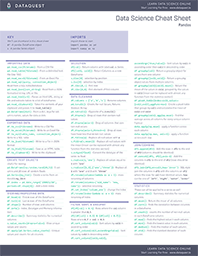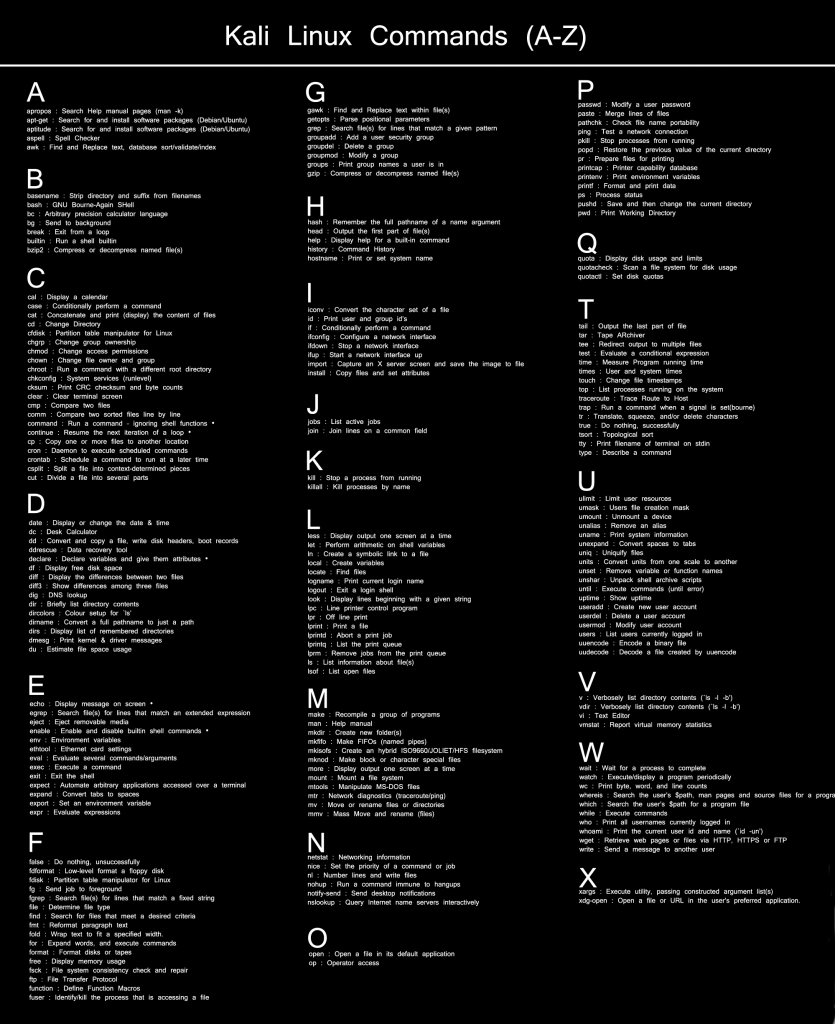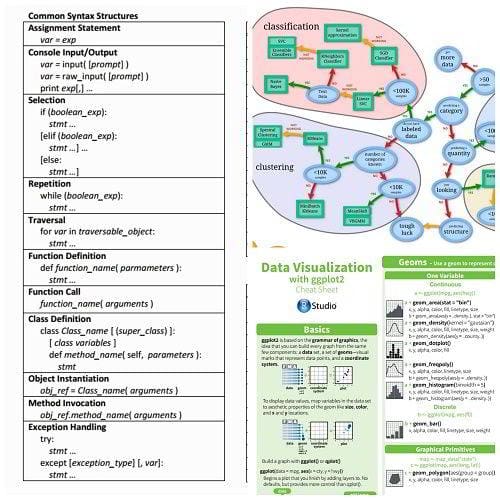For working with data in python, Pandas is an essential tool you must use. This is a fast, powerful, flexible and easy to use open source data analysis and manipulation tool, built on top of the Python programming language.
But even when you’ve learned pandas in python, it’s easy to forget the specific syntax for doing something. That’s why today I am giving you a cheat sheet to help you easily reference the most common pandas tasks.
It’s also a good idea to check to the official pandas documentation from time to time, even if you can find what you need in the cheat sheet. Reading documentation is a skill every data professional needs, and the documentation goes into a lot more detail than we can fit in a single sheet anyway!

Depending on where the data is coming from and it’s file extension, you’d need different Pandas commands. Below are a couple of examples. # import pandas and numpy libraries import pandas as pd import numpy as np # import a csv file from local machine df = pd.readcsv('filepath') # import a csv file from an online database df = pd.readcsv. PYTHON PANDAS Cheat Sheet by sanjeev95 - Cheatography.com Created Date: 0656Z. Python Pandas functions we use every day. This differs from the previous function. Using iloc, the 1st row has an index of 0, the 2nd row has an index of 1, and so on even if you’ve modified the data frame and are now using string values in the index column.
Importing Data:
Use these commands to import data from a variety of different sources and formats.
Exporting Data:
Pandas Functions Cheat Sheet
Use these commands to export a DataFrame to CSV, .xlsx, SQL, or JSON.
Viewing/Inspecting Data:
Use these commands to take a look at specific sections of your pandas DataFrame or Series.
Selection:
Use these commands to select a specific subset of your data.
Data Cleaning:
Use these commands to perform a variety of data cleaning tasks.
Filter, Sort, and Groupby:
Use these commands to filter, sort, and group your data.
Join/Combine:
Use these commands to combine multiple dataframes into a single one.
Statistics:
These commands perform various statistical tests. (They can be applied to a series as well)
I hope this cheat sheet will be useful to you no matter you are new to python who is learning python for data science or a data professional. Happy Programming.
You can alsodownload the printable PDF file from here.
.
This post updates a previous very popular post 50+ Data Science, Machine Learning Cheat Sheets by Bhavya Geethika. If we missed some popular cheat sheets, add them in the comments below.
Pandas Cheat Sheet
Cheatsheets on Python, R and Numpy, Scipy, Pandas
Data science is a multi-disciplinary field. Thus, there are thousands of packages and hundreds of programming functions out there in the data science world! An aspiring data enthusiast need not know all. A cheat sheet or reference card is a compilation of mostly used commands to help you learn that language’s syntax at a faster rate. Here are the most important ones that have been brainstormed and captured in a few compact pages.
Mastering Data science involves understanding of statistics, mathematics, programming knowledge especially in R, Python & SQL and then deploying a combination of all these to derive insights using the business understanding & a human instinct—that drives decisions.
Here are the cheat sheets by category:
Cheat sheets for Python:
Python is a popular choice for beginners, yet still powerful enough to back some of the world’s most popular products and applications. It's design makes the programming experience feel almost as natural as writing in English. Python basics or Python Debugger cheat sheets for beginners covers important syntax to get started. Community-provided libraries such as numpy, scipy, sci-kit and pandas are highly relied on and the NumPy/SciPy/Pandas Cheat Sheet provides a quick refresher to these.
- Python Cheat Sheet by DaveChild via cheatography.com
- Python Basics Reference sheet via cogsci.rpi.edu
- OverAPI.com Python cheatsheet
- Python 3 Cheat Sheet by Laurent Pointal
Cheat sheets for R: Digital painting pdf.
The R's ecosystem has been expanding so much that a lot of referencing is needed. The R Reference Card covers most of the R world in few pages. The Rstudio has also published a series of cheat sheets to make it easier for the R community. The data visualization with ggplot2 seems to be a favorite as it helps when you are working on creating graphs of your results.
At cran.r-project.org:
At Rstudio.com:
- R markdown cheatsheet, part 2
Others:
- DataCamp’s Data Analysis the data.table way

Cheat sheets for MySQL & SQL:
For a data scientist basics of SQL are as important as any other language as well. Both PIG and Hive Query Language are closely associated with SQL- the original Structured Query Language. SQL cheatsheets provide a 5 minute quick guide to learning it and then you may explore Hive & MySQL!
- SQL for dummies cheat sheet
Cheat sheets for Spark, Scala, Java:
Apache Spark is an engine for large-scale data processing. For certain applications, such as iterative machine learning, Spark can be up to 100x faster than Hadoop (using MapReduce). The essentials of Apache Spark cheatsheet explains its place in the big data ecosystem, walks through setup and creation of a basic Spark application, and explains commonly used actions and operations.
- Dzone.com’s Apache Spark reference card
- DZone.com’s Scala reference card
- Openkd.info’s Scala on Spark cheat sheet
- Java cheat sheet at MIT.edu
- Cheat Sheets for Java at Princeton.edu
Cheat sheets for Hadoop & Hive:

Hadoop emerged as an untraditional tool to solve what was thought to be unsolvable by providing an open source software framework for the parallel processing of massive amounts of data. Explore the Hadoop cheatsheets to find out Useful commands when using Hadoop on the command line. A combination of SQL & Hive functions is another one to check out.
Cheat sheets for web application framework Django:
Django is a free and open source web application framework, written in Python. If you are new to Django, you can go over these cheatsheets and brainstorm quick concepts and dive in each one to a deeper level.

- Django cheat sheet part 1, part 2, part 3, part 4
Cheat sheets for Machine learning:
We often find ourselves spending time thinking which algorithm is best? And then go back to our big books for reference! These cheat sheets gives an idea about both the nature of your data and the problem you're working to address, and then suggests an algorithm for you to try.
- Machine Learning cheat sheet at scikit-learn.org
- Scikit-Learn Cheat Sheet: Python Machine Learning from yhat (added by GP)
- Patterns for Predictive Learning cheat sheet at Dzone.com
- Equations and tricks Machine Learning cheat sheet at Github.com
- Supervised learning superstitions cheatsheet at Github.com
Kemper 4500 manual. Cheat sheets for Matlab/Octave
MATLAB (MATrix LABoratory) was developed by MathWorks in 1984. Matlab d has been the most popular language for numeric computation used in academia. It is suitable for tackling basically every possible science and engineering task with several highly optimized toolboxes. MATLAB is not an open-sourced tool however there is an alternative free GNU Octave re-implementation that follows the same syntactic rules so that most of coding is compatible to MATLAB.
Cheat sheets for Cross Reference between languages
Related:

